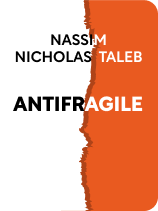

This article is an excerpt from the Shortform book guide to "Antifragile" by Nassim Nicholas Taleb. Shortform has the world's best summaries and analyses of books you should be reading.
Like this article? Sign up for a free trial here .
What is path dependence theory? How can understanding path dependence help us create antifragile systems?
Path dependence theory is the idea that in order for an event to happen, a specific sequence of events must be followed and performed correctly. The outcome depends on the entire sequence.
Read more about path dependence theory and antifragility.
Understanding Path-Dependence
Consider a fragile package that gets dropped and broken. It doesn’t magically repair itself when you pick it up off the ground. The damage is irreversible; therefore, getting the package safely to its destination requires performing the right sequence of tasks in the right order. You have to pad and protect it, carry the package carefully, and store it securely. Doing any of those things out of order greatly increases the chance that the object inside will break.
A situation like this, where it’s not just the destination but the entire sequence of events that matters, is called path-dependent. For another example of path-dependence, imagine getting surgery first and then receiving anesthesia. Clearly, your experience would be a lot different—and a lot worse—than if those events had happened in the other order.
Therefore, the first step toward reducing downsides in business, economics, or anywhere else, is to consider the path that your venture is going to take. If your country’s economy grows rapidly, but is left vulnerable to a sudden collapse and recession (like America in 1929), then your growth is meaningless. It would be better to grow more slowly—or not at all—and put safeguards in place to make sure that a sudden downturn doesn’t wipe away all of your profits.
To see how this is path-dependent, consider that a country can very easily grow its GDP by saddling future generations with immense debt (again, America provides a good example with student loans). However, this will inevitably cause harm in the long term when those debts need to be repaid by people who can’t afford to do so. On the other hand, GDP growth in Europe before and during the Industrial Revolution was quite slow—relatively speaking—but it wasn’t fragile. The continent is still reaping the benefits of the growth it experienced, and it’s one of the dominant powers in the world even today.

———End of Preview———
Like what you just read? Read the rest of the world's best book summary and analysis of Nassim Nicholas Taleb's "Antifragile" at Shortform .
Here's what you'll find in our full Antifragile summary :
- How to be helped by unforeseen events rather than harmed by them
- Why you shouldn't get too comfortable or you'll miss out on the chance to become stronger
- Why you should keep as many options available to you as possible






